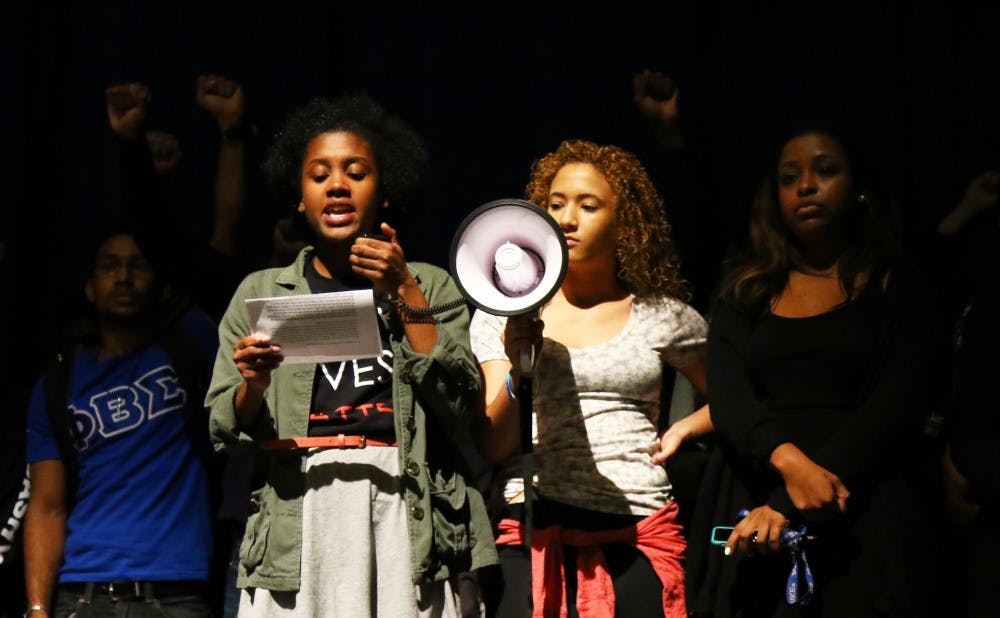A recent survey put out by the University’s task force on bias and hate issues will guide the committee’s ongoing deliberations.
The task force—convened after the first community forum Nov. 13—is charged with making recommendations to President Richard Brodhead by mid-April about how the University can tackle bias and hate issues. Last Monday, students received a survey from the task force in an attempt to gather data about instances of daily discrimination on campus.
“The goal is to have the recommendations of the task force be based on evidence as much as possible,” said Kelly Brownell, the task force’s co-chair and dean of the Sanford School of Public Policy. “There might be things that have been missed in the subjective impressions that might be caught in the data, which could help us decide where the strongest emphasis might be placed in our final report.”
The survey will add to pre-existing data the University has collected, including information from senior surveys, said Gavan Fitzsimons, head of the task force’s data subcommittee and R. David Thomas professor of marketing and psychology in the Fuqua School of Business.
He explained that prior Duke surveys have provided information about how welcome students feel in the community and how much support they receive based on various demographic characteristics. The task force will compare differences in results across demographics and assess whether those differences are “Duke-specific.” Information and analysis will be included in the task force’s April report.
What prior surveys have not captured, however, is whether any dissatisfaction expressed by students was due to a particular high-profile incident or a series of everyday occurrences, Fitzsimons said. The task force’s new survey—based off of the Everyday Discrimination Scale created by sociologists—looks to make that distinction.
The survey asks students to rank statements such as, “people act as if they are afraid of you” or “you are threatened or harassed,” based on frequency of occurrence—“almost every day,” “at least once a week,” “a few times a month,” “a few times a year,” “less than once a year” or “never.”
Not all members of the student body received the survey. Roughly one-third of students, selected randomly, received the bias and hate survey while the rest received the unrelated University Student Experiences Survey, which examines sexual harassment on campus.
Although sending the survey to all students would have been useful, the task force was worried receiving both surveys at the same time would lower students’ response rate, Fitzsimons explained. So far, the bias and hate survey has generated an approximately 15 percent response rate, he wrote in an email.
Information that is representative of the whole University community can typically be achieved with a smaller sample size of people as well, Brownell noted.
The survey does not immediately ask for demographic descriptors such as race, religious affiliation, sexual orientation or gender identity. Instead, students are only asked for that information if they mark “a few times per month” or more frequent to a question at least once.
A student who only responded “a few times a year” would not be directed to the demographic information page.
Fitzsimons acknowledged that demographic data from those students could be potentially useful, but said that the task force did not want to deviate from how the EDS has traditionally been used in social science research.
“Low levels would still be something personally I might worry about, but for consistency and scientific rigor we decided to field it exactly the way it had been fielded in the past,” he said.
The task force can, however, get limited demographic data through Duke’s Office of Institutional Research, although it is not as thorough data as from the survey itself, Fitzsimons said. The OIR matches some background information, such as place of origin and gender, to student responses through their email addresses.
All personal identifiers are subsequently stripped from the data to preserve anonymity, he emphasized.
Brownell added that the task force ultimately hopes to use the data they receive to facilitate the University’s process of addressing these hate and bias issues.
“Our task force will be making recommendations for ongoing activities that will endure beyond the life of our committee,” he said.
The Chronicle communicated with Fitzsimons by phone and by email.

